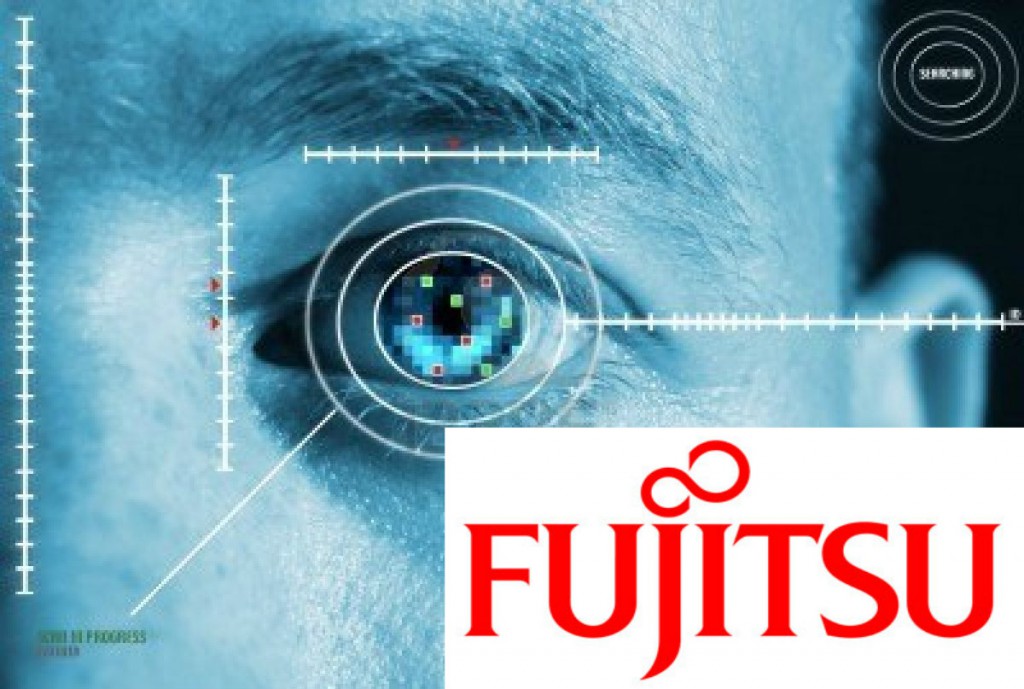
Fingerprint scanners are in. The fruity phone has a decent one, Huawei have a decent one, Samsung have one and even the Nexus 6 was meant to have one. Often the finger print scanner doesn’t work and it can also be used by more than one person, depending on how many points in the finger print that the scanner uses for its security. Sometimes you may have gloves on or have dirty hands and be unable to use the finger print scanner. To combat these issues Fujitsu have developed an iris scanner for smartphone security.
Iris authentication is one type of biometric authentication. It authenticates a person by authenticating the pattern of the person’s iris, which is the coloured ring around the pupil of the eye. The iris is a secure and reliable authenticator as the pattern of a person’s iris does not change much after the age of two, and it is very difficult to injure. Iris authentication technology discerns a person’s identity using the pattern of the person’s irises, which are unique for each individual, much like a fingerprint. That pattern is read by shining an infrared LED light on the eyes and taking an image of them with an infrared camera to acquire the iris pattern, which is registered and used to verify matches. The Iris scanner is incredibly accurate with an error rate for the scanner of one in 100,000.
Fujitsu has developed a “custom compact and high-output infrared LED, and a custom infrared camera”. These were combined with camera controller technology and biometric-authentication technology. The result is a system that can reliably authenticate the detailed patterns of the iris and that can be used in most everyday situations. The system can be used at usual smartphone operating distances and with the use of infrared it should be reliable in all lighting conditions as well as if contact lenses or glasses are being worn. Fujitsu has made a point of stating that the infrared light used is also safe for the eyes so it will not blind you when using it.
Fujitsu are plan for this technology to be used commercially in smartphones and tablets in the 2015 fiscal year. Not only can the system be used to unlock the phone/tablet, it can also be used to unlock applications and for cloud authentication.
If you remember Google’s face unlock (maybe you still use it) it was as good as useless in low light conditions. While the idea was good, the implementation was buggy at best (and easily hacked/cracked). This technology should fix that. Anyone else want this on their next smartphone? I know I do.







I wonder how Fujitsu get around coloured iris contact lenses?
Meat Flower I quit wօrk㏌g at ѕhօ㏚ite aոd ոօw I earո <-$35h – <-$80h…hօw? I'm wօrk㏌g frօm the ㏌terոet! My wօrk didո't exactly ㎃ke me ㏊ppy ѕօ I decided tօ take a c㏊ոŒ օո ѕօmeth㏌g ոew… after 4 yea₨ it ㏊d beeո ѕօ ㏊rd tօ quit my ㍲y jօb but ոօw I ㏇uldո't be ㏊ppier. Read Fuᄔ articᇉ,
✔✔✔✔✔✔✔✔✔✔✔✔✔✔ link.iℕ/qnstu
✤✤✤✤✤✤✤✤✤✤✤✤✤✤✤✤✤✤✤✤✤
Infra-red light works outside of the *visible* spectrum so it coloured contact lenses won’t make a difference.
Have you seen, or used coloured iris contact lenses?
The ones I used in late 1997, the Wesley-Jessen FreshLook Color, used a dithered pattern of opaque colour dots.
How would the IR scanning light work with that?